In the diagram shown, the block A and B are of the same mass M and the mass of the block C is (M1). Friction is present only under the block A. the whole system is suddenly released from the state of rest. The minimum coefficient of friction on keep the block A in the state of rest is equal to .
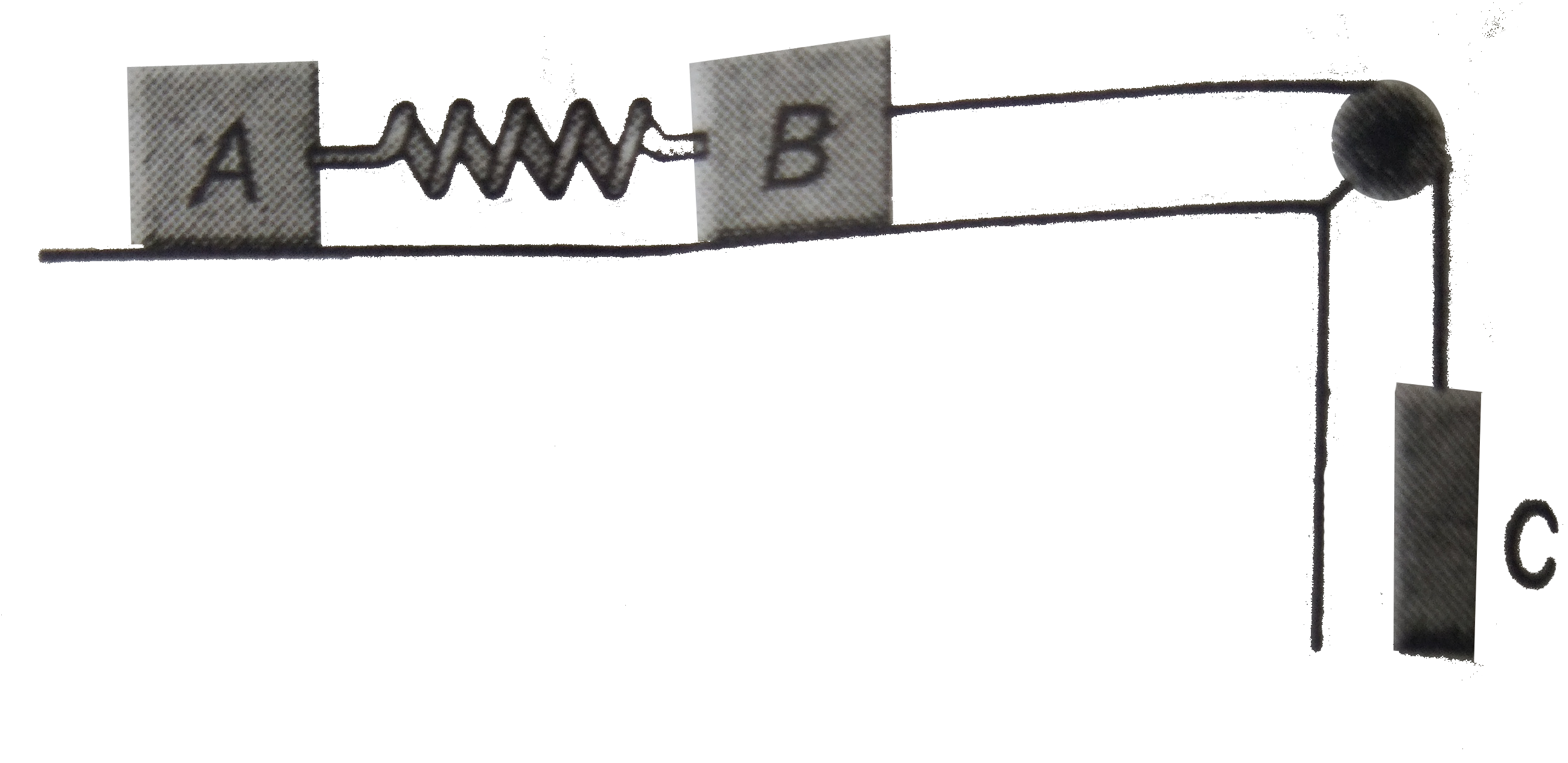
(a) M1M
(b) 2M1M
(c) M12M
(d) None of these
The correct Answer is:B
LetXm is maximum elongation of spring. Then, incerase in potential energy of spring=decrease in potential energy of C.
∴12KX2m=M1gXm
or KXm=maximum spring force
=2M1g−μminMg
∴μmin=2M1M
Similar Questions
In the given figure if system is released from rest,then find the minimum value of coefficient of friction such that block A of mass 2m does not move.
View SolutionIn the diagram shown, friction is present only between therod and the wall. The mass of the rod is M and tht of the wedge is 3M. What is the minimum value of the coefficient of friction between the rod and the wall so that rod remains in the state of rest?
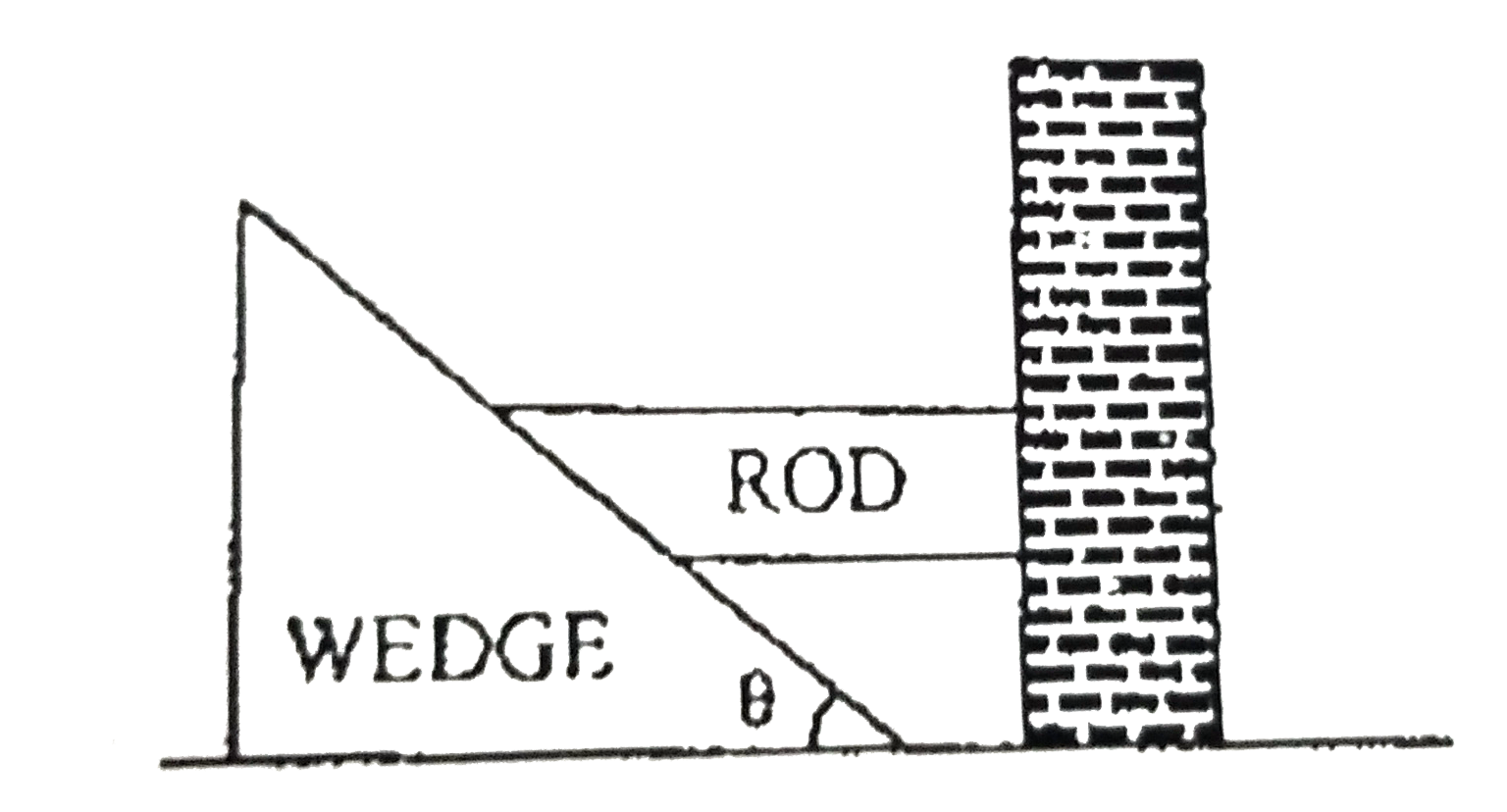
View Solution
Knowledge Check
Two blocks A and B of equal mass m are connected through a massless string and arranged as shown in the figure. Friction is absent everywhere. When the system is released from rest
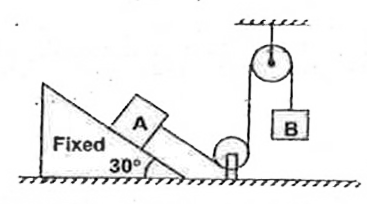 Atension in the string is mg2Btension in the string is mg4Cacceleration of A is g2Dacceleration of A is 3g4
Atension in the string is mg2Btension in the string is mg4Cacceleration of A is g2Dacceleration of A is 3g4A block of mass 1 kg is placed on a wedge shown in figure. Find out minimum coefficient of friction between wedge and block to stop the block on it.
 A0.6B0.9C1D0.2
A0.6B0.9C1D0.2In the arrangement shown in figure, there is a friction force between the blocks of masses m and 2m. The mass of the suspended block is m. The block of mass m is stationary with respect to block of mass 2m. The minimum value of coefficient of friction between m and 2m is
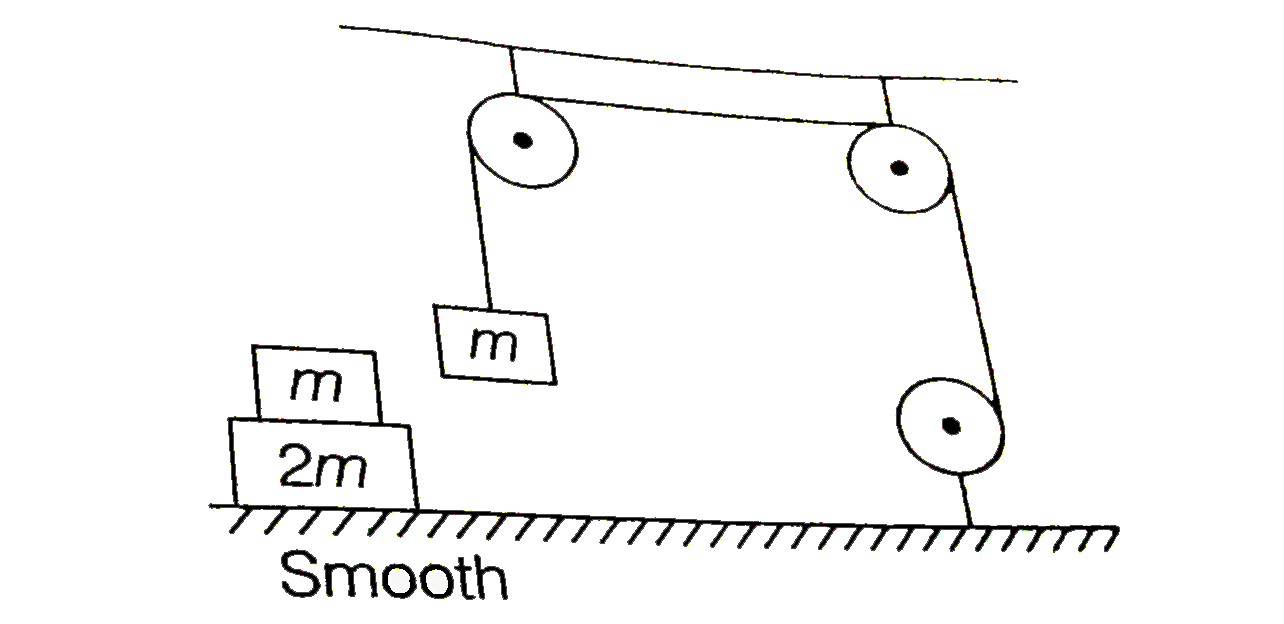 A12B1√2C14D13
A12B1√2C14D13
A block of mass m is kept on a horizontal table. If the static friction coefficient is μ., find the frictional force acting on the block.
View SolutionCalculate angle of friction between wedge and block system is at rest M coefficient of friction between wedge and block.
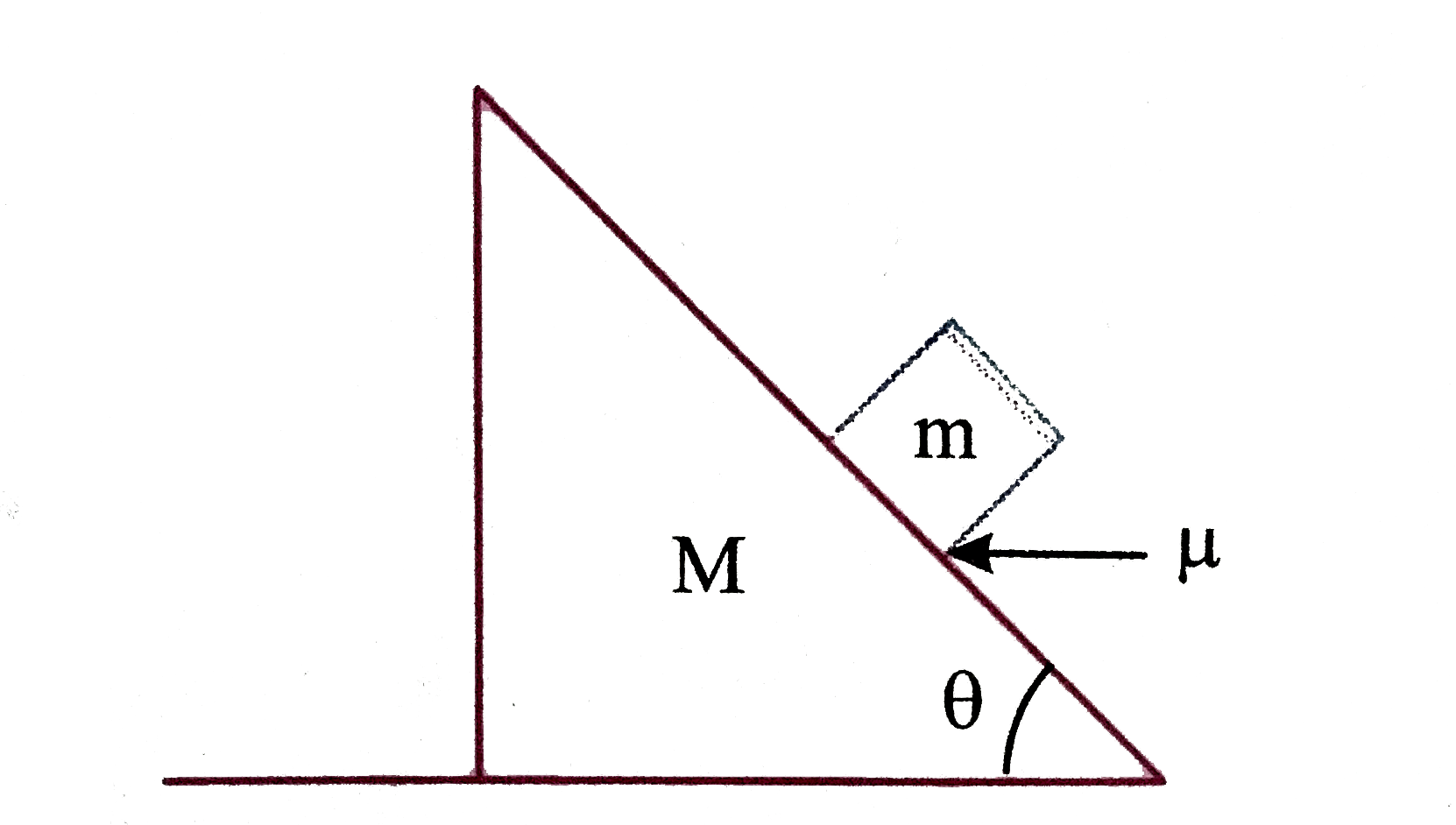
View SolutionBlock A of mass M in the system shown in the figure slides down the incline at a constant speed. The coefficient of friction between block A and the surface is 1 3 3 . The mass of block B is-

View SolutionIn the arrangement shown in the figure mass of the block B and A are 2m , 8m respectively. Surface between B floor is smooth. The block B is connected to block C by means of a pulley. If the whole system is released then the minimum value of mass of the block C so that the block A remains stationary with respect to B is: (Coefficient of friction between A and B is μ and pulley is ideal).

View SolutionA block of mass M is being pulley along horizontal surface .The coefficient of friction the block and the surface is μ If another block of mass M/2 is placed on the block and it is pulled is again pulled on the surface , the coefficient of friction the block and the surface will be
View Solution
